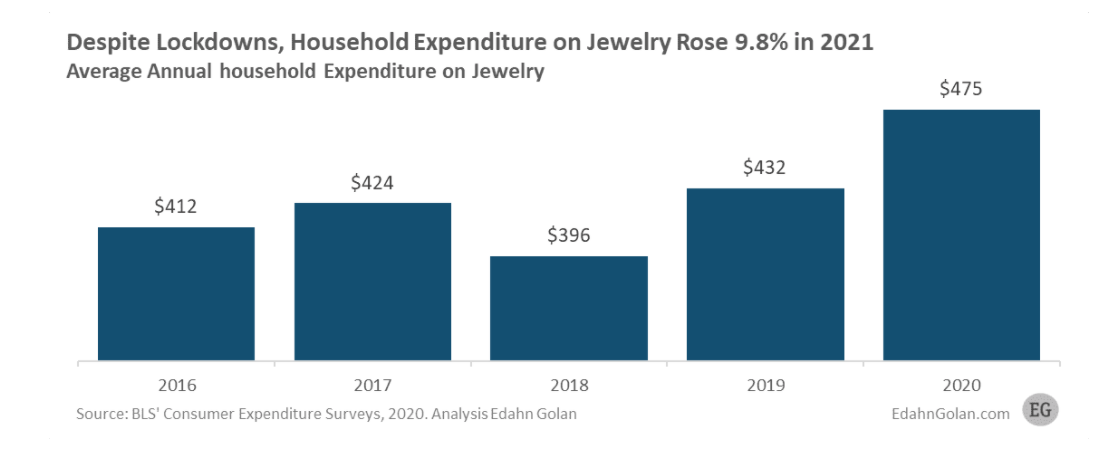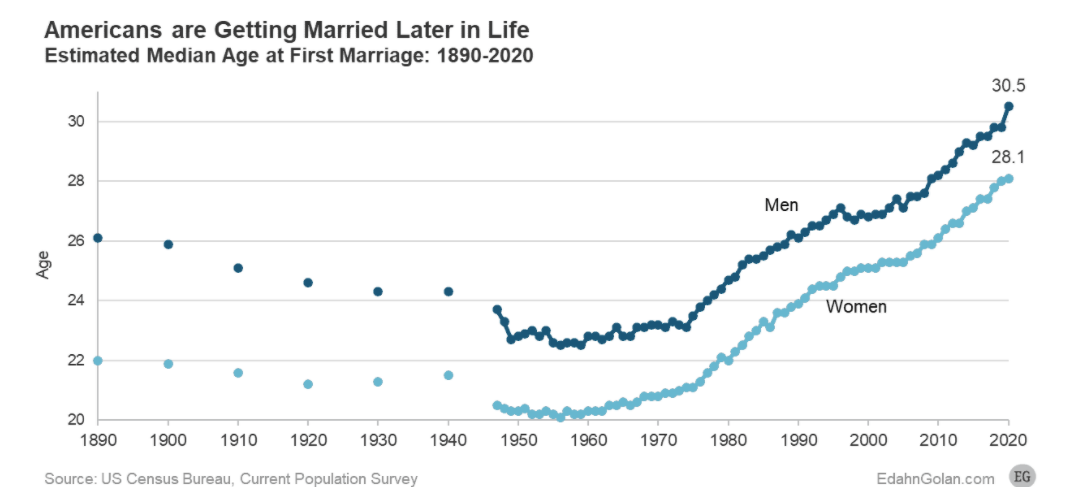In 2020, the average US household purchased $475 worth of jewelry, up 9.8% from 2019. The sharp rise in spending on jewelry was one of the most outstanding outcomes of what was otherwise a very miserable year.
What makes this finding even more remarkable is that the average total expenditure by US households actually declined 2.7% to $61,334, based on the latest Consumer Expenditure Surveys. This means that although people spent less overall, they spent much more on jewelry.
Average income per household edged up to $84,352 in 2020. With the average expenditure declining, US consumers saved more of their income, yet allowed themselves to splurge on jewelry.
This is the second year in a row that average expenditure on jewelry has increased. In 2019, it rose by 9.2% against a rising economy and a booming stock market.

Spending on jewelry: top spenders
The profile of those spending the most on jewelry tells an interesting story about American society and economics, especially in the Year-of-the-COVID.
According to our analysis, the largest spenders were people aged 45-54 with a pre-tax income of $200,000 or more, living in the largest US cities. This demographic is employed as managers and professionals and holds a master’s, professional, or doctoral degree. And, they tend to be white.
This is also the profile of people least affected economically by the pandemic.

That said, this group was far from being alone in their increased appetite for jewelry.
Top jewelry buyers: age
The 45-54 age group spent on average $792 per household. This is also the age group that had the largest increase in spending on jewelry, up 113% year on year.
In 2019, the top spenders were 25–34-year-olds. Their on jewelry spending fell more than 20% in 2020, and for obvious reasons – a halt in weddings due to COVID-19 and social distancing.
In 2020, the average age for men at first marriage was 30.5, and for women 28.1 years old. This is part of an ongoing rise in the average age of marriage.
Other age groups that increased spending on jewelry in 2020 were 35-44-year-olds, and people 65 years and older.
Top jewelry buyers: income
By income, the top income bracket of $200,000 and more has always been the group spending the most on jewelry. In 2020, they averaged $2,255, nearly 7% more than in 2019.

